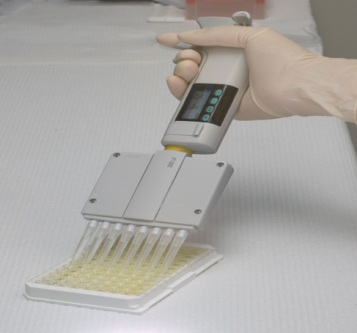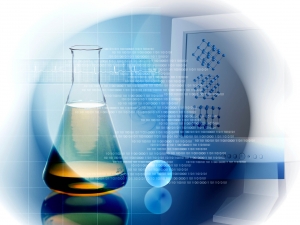August 29, 2018 -- Imagine a scientist who is on the brink of an important discovery in oncology. She believes to have discovered a new tumor suppressor gene and wants to track this protein’s movement through skin cells by forming a recombinant fluorescent protein. In order to construct this protein, she needs to first extract and purify DNA from the cells of her model organism to identify the gene of interest. Unfortunately, she has consistently failed to purify the DNA due to contaminations in her alcohol-based wash. She’s unaware of this contamination, and it’s becoming too time consuming and unproductive to sequence this DNA. After much effort, she sadly gives up on the protein and the scientific world misses out on important knowledge.

Prior to analysis, sample preparation is when a sample (biological specimen) is converted from its in-situ form to an analyte that can be examined and studied using analytical tools like a western blot or DNA sequencing. High-quality and precise sample preparation not only makes a significant impact on reducing experimental error, but it can also increase the performance and robustness of analytical methods downstream of the initial preparation.
The global sample prep market reached over $5 billion in 2017, and our analysts estimate that over a third of demand is generated by the pharmaceutical/biotech sector. Yet, the applied sector is also experiencing high growth, especially from the agriculture/food industry and from increased government environmental regulation across India, China, and other countries. In the coming years, it will be interesting to see how vendors respond to this increasing demand for efficient sample preparation tools across several different sectors.

Along with the growth of this market, highly selective sample preparation techniques have advanced in recent years, including electromembrane extraction (EME). This type of preparation is highly selective due to the use of an electrical field, but is very time consuming and requires large amounts of organic solvents. Many of these selective processes require chemicals, consumables, and time that scientists would much rather use for tasks of greater importance. As a result, there has been a great push to increase speed and efficiency, while lowering sample prep cost through technological improvements and automation.
For example, In November of 2017, Brooks Life Sciences decided to expand its capabilities to include automated RNA extraction and cryopreservation of peripheral blood mononuclear cells. Approximately one month later, CEM released the “EDGE” extraction system for gas or liquid chromatography samples. This automated system combines pressurized fluid extraction (PFE) with dispersive solid phase extraction (D-SPE) that allows for rapid sample extraction and filtration in less than 5 minutes. PFE employs liquid solvents at elevated temperatures and pressures; D-SPE is based on the use of sorbent in liquid samples during the clean-up of analytes from complex solutions. President Collins of CEM believes this is truly a “breakthrough technology that will completely transform the world of sample preparation.”

With breakthrough technologies, it's important for suppliers to keep in mind what features have the most influence over scientists’ research. It isn’t much of a surprise that according to our research, cost of the system and related consumables are the most important factors scientists consider when evaluating automated sample preparation instruments. However, scientists seem less concerned about brand or product reputation, as long as the system is easy to use and drastically reduces the sample prep time. These preferences can be used by suppliers to differentiate their products and provide better efficiency for researchers.
What is your outlook on sample preparation? Share your thoughts and opinions in our forums below!
Copyright © 2018 scienceboard.net






